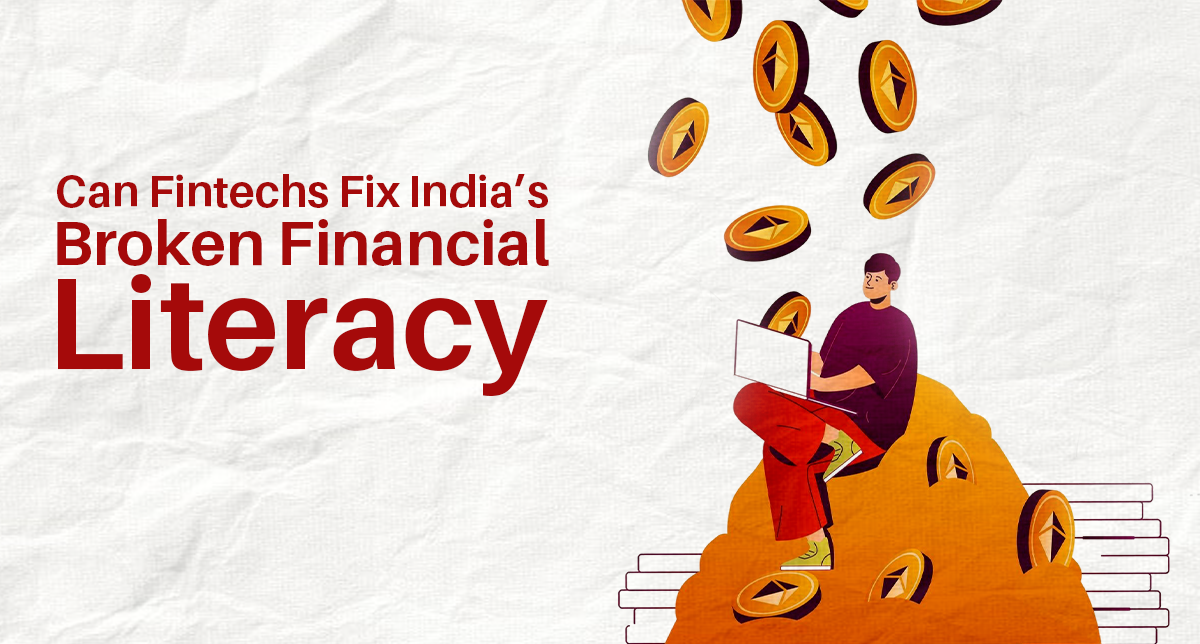Indian Financial Literacy is Broken. Can Fintechs Fix What Schools Never Taught?
Indian financial literacy has long been one of the weakest links in the country’s growth story. Despite India’s rapid economic rise, only 27% of Indians (as of 2019) understood basic financial concepts such as interest, investing, and risk. This gap is alarming, decades of schooling haven’t produced financially aware citizens. Mismanaged debt, vulnerability to scams, and missed opportunities for investment continue to hold millions back. The big question: can fintechs step in where schools and traditional systems have failed?
Indian Financial Literacy 101: A Skill You Can’t Afford to Miss
At its core, Indian financial literacy is the ability to manage and use money wisely. It includes skills like:
- Budgeting effectively
- Saving and investing with purpose
- Managing debt responsibly
- Understanding interest, loans, and inflation
- Knowing how banks, credit, insurance, and taxes work
It isn’t about becoming a financial expert. It’s about confidence being informed enough to manage money and secure your financial future.
Why Indian Financial Literacy Matters for Livelihood
-
Better Money Management: With strong Indian financial literacy, individuals can plan budgets that reduce stress
-
Avoiding Debt Traps: Knowledge of interest rates helps people escape cycles of high-interest loans.
-
Emergency Preparedness: Teaches the importance of maintaining a financial cushion.
-
Planning for the Future:Avoiding Debt Traps: Supports savings for education, homes, and retirement.
-
Work & Business Survival Financially literate entrepreneurs manage cash flow and costs more effectively.
The Perks of Being Money-Wise
-
Smarter Decisions: Invest with clarity and avoid scams.
-
Peace of Mind: Financial literacy lowers money-related anxiety.
-
Better Credit Access: Stronger credit scores mean better loans.
-
Confidence: Control your money, don’t let money control you.
-
Wealth Creation: Build and grow over time.
Schools Taught Algebra. Life Demands EMI Calculations.
- Here’s the gap: schools taught formulas and theory, but Indian financial literacy topics like EMI calculations, SIPs, or insurance never made it into the curriculum
- We use UPI daily but don’t understand saving discipline. We have Demat apps but skip reading fact sheets. We invest because influencers said so, not because we understand risk
Why Indian Schools Still Fail on Financial Literacy
-
Curriculum Gaps: RBI modules exist, but rollout remains inconsistent.
-
Cultural Blind Spots: Lessons on budgeting, taxes, or insurance are missing.
-
Practical Disconnect: Without everyday money skills, students remain financially unprepared.
Why Government Alone Can’t Fix Indian Financial Literacy
-
Low Engagement: Classroom lectures rarely stick.
-
Digital Divide: Rural communities often lack devices or digital skills.
-
Cultural Disconnect: Without tailoring content to local languages and realities, education misses its audience women, farmers, senior citizens.
This gap is visible in rural India, where many don’t know basic financial terms like “insurance,” and tribal groups remain trapped in cycles of debt despite familiarity with loans.
Fintech’s New Role: From Tools to Educators
Fintech apps were built for convenience, but now they must also become Indian financial literacy educators:
- Investing apps must teach diversification basics.
- Lending apps must explain repayment terms clearly.
- Payment apps must onboard new digital users with guidance.
If fintech is the new gateway, it can’t allow users to walk in blind.
How Fintechs Can Redefine Indian Financial Literacy
-
Integrate Education Into the Product: Use micro-lessons, explainers, and nudges inside apps.
-
Simplify the Language: Replace jargon with relatable storytelling.
-
Celebrate Understanding: Make “I know my money” as aspirational as “I invest in stocks.”
-
Reward Learning: Gamify literacy with incentives for good financial habits.
This Is More Than CSR. It’s Survival.
Financially literate users are more confident, default less, and stay loyal. They ask sharper questions and grow with the ecosystem.
The Path Forward
- Integrate fintech modules into schools and Financial Literacy Centres.
- Build Bharat-first programs using UPI, Aadhaar, PMJDY to reach rural audiences.
- Measure literacy impact via app usage and adaptive quizzes.
- Actively promote RBI’s FAME (Financial Awareness Messages Educate) through fintech platforms.
Latest Blog

Fintech x AI: How Artificial Intelligence is Reshaping Financial Services

India’s UPI Goes Global: Redefining Cross-Border Finance

SEBI’s Research Certification Rule: A New Era of Credibility in Indian Markets

Fintech in the India–US Trade Crossfire: What’s at Play?



